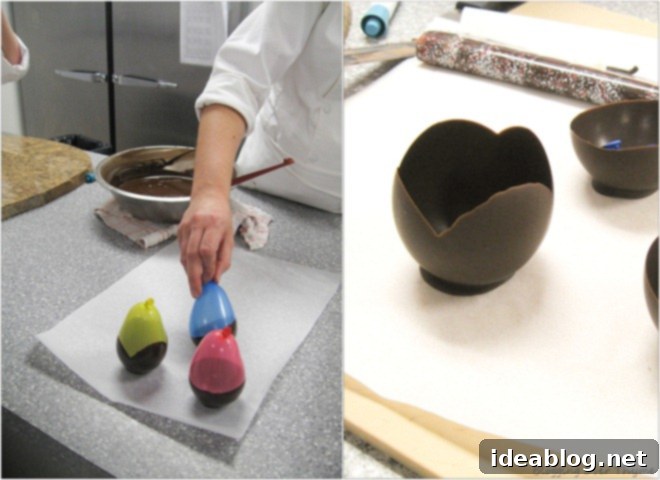Mastering Culinary Arts: A Week of Grilled Rockfish, Duck Confit, and Chocolate Tempering at Chef School
The aroma of success filled the kitchen yesterday as our class truly shone, delivering a delicious menu with unparalleled efficiency. It marked our most cohesive day this week, characterized by seamless communication, impeccable plating, and perfectly timed service. This triumphant feeling provided a much-needed morale boost, bringing a satisfying close to what has been an incredibly intense, yet profoundly informative, inaugural week at culinary school. Chef Patrice, ever the realist, reminded us not to grow complacent, teasing an even more demanding schedule for the upcoming week. Despite the looming challenges, concluding this foundational week on such a high note was incredibly rewarding, solidifying our passion for professional cooking and hinting at the exciting journey ahead in the culinary arts.
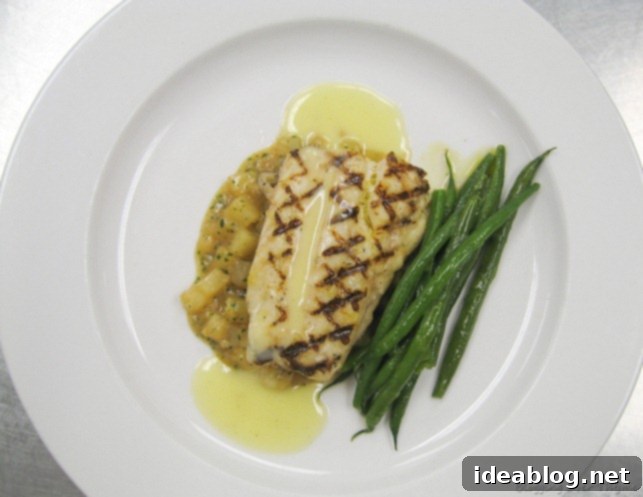
Each day at culinary school presents a fresh opportunity to master a new technique or operate a sophisticated piece of equipment. Friday was no exception, as our main course featured an exquisite grilled rockfish, accompanied by delectable “risotto-style” potatoes and a delicate beurre fondu sauce, with a simple side of blanched green beans. The image above showcases our beautifully plated final dish, ready for service – a testament to our growing skills in gourmet seafood preparation.
While our curriculum has previously introduced us to handling various round fish like trout and mahi-mahi, this particular day marked our initial foray into the comprehensive process of breaking down a rockfish from its whole state. Each student was assigned their own rockfish, tasked with the precise art of filleting and skin removal. Though the fundamental principles of filleting round fish bear similarities to handling flat fish, such as flounder – a technique we’ve explored through resources like this guide on filleting flat fish – the rockfish presented its own unique challenges. Its bone structure and skin texture required a more nuanced approach, making it a slightly trickier endeavor for novice hands. Despite the initial learning curve, this hands-on experience has quickly become one of my favorite aspects of fish preparation; there’s something incredibly satisfying about transforming a whole fish into pristine fillets, regardless of how unconventional that might sound!
For our grilled rockfish, we opted for a delicate yet potent marinade to enhance its natural flavors. We meticulously combined fresh rosemary sprigs, fragrant thyme, thinly sliced garlic, and a generous drizzle of high-quality olive oil. To ensure the marinade deeply penetrated the fish in our limited timeframe, we utilized a cryovac machine. This remarkable piece of equipment vacuum-packs the fish along with its marinade, creating an environment where flavors are absorbed much more rapidly and effectively due to the pressure differential. This accelerated marination technique is incredibly cool to witness and execute, proving invaluable in a professional kitchen setting where time is often of the essence.
Our current cryovac unit, while proudly labeled “professional,” is more suited for educational purposes than the rigorous demands of industrial or high-volume restaurant use. Nevertheless, it performed its task admirably, demonstrating the core principles of vacuum sealing. These versatile machines are incredibly crucial in various advanced culinary techniques, including precise sous vide cooking and extended food preservation. We’ve heard exciting whispers that the school is planning to invest in a top-tier, industrial-grade cryovac machine, reportedly costing around $5,000, which will undoubtedly elevate our future culinary explorations and capabilities, further cementing our professional cooking training.
The principle behind cryovac technology is fascinatingly simple yet profoundly impactful for advanced food preparation. By removing virtually all oxygen from the packaging, the machine not only intensifies the flavor infusion during marination but also significantly extends the shelf life of ingredients. This preservation capability is invaluable in a professional kitchen, minimizing spoilage and ensuring ingredients remain fresh for longer periods. Furthermore, the ability to pre-portion and package single servings of meat, fish, or other components is a massive cost-saving benefit for restaurants, streamlining operations, controlling inventory, and maintaining consistent quality. Witnessing its efficiency and versatility firsthand has definitely sparked a desire; I confess, I’m now secretly coveting one of these incredible kitchen appliances for my own home!
After marinating, the rockfish fillets were carefully placed on a grill plate to achieve those coveted, appealing grill marks, signifying proper heat application. To ensure the delicate fish remained moist and flaky, preventing any dryness, we completed its cooking process in the oven. This two-stage cooking method – grilling for aesthetics and oven-finishing for internal doneness – is a classic technique for perfect seafood. The final touch involved delicately brushing the perfectly cooked fillets with a small amount of high-quality olive oil, imparting a beautiful sheen that enhanced their visual appeal before serving, truly embodying the principles of professional presentation.
The accompanying potatoes “risotto style” proved to be an equally delicious and innovative component of our main course. We began by meticulously dicing the potatoes into very small, uniform pieces. Chef Patrice shared an invaluable trick for preparing these potatoes in advance without succumbing to oxidation, which can cause discoloration: a light dusting of powdered Vitamin C. Unlike other acidic agents such as lemon juice, Vitamin C is completely flavorless, ensuring it imparts no undesirable taste to the dish, and it’s remarkably cost-effective. This simple yet brilliant tip allows for efficient mise en place in a busy kitchen. The cooking process mirrored that of a traditional risotto: very finely chopped onions were gently sautéed until translucent, followed by the gradual addition of rich chicken stock and a splash of aromatic white wine. Once the liquid was simmering, the diced potatoes were introduced and slowly cooked, stirring frequently until they achieved that characteristic creamy texture. We finished this gourmet potato dish with a luxurious swirl of mascarpone cheese, a generous grating of Parmesan, and a sprinkle of finely chopped fresh parsley, elevating a humble vegetable into a sophisticated culinary experience.
Our delicate beurre fondu sauce, crafted at the very last minute to ensure its freshness and perfect consistency, is a testament to the elegance of simplicity in classic French cuisine. This classic emulsified butter sauce is achieved by vigorously whisking a very small amount of fresh lemon juice and a single drop of water into a substantial quantity of melted butter, creating a silky, homogenous emulsion. The key is careful control of temperature and continuous whisking to prevent the butter from breaking. To add an intriguing and unexpected layer of flavor, we incorporated a literal drop of vanilla extract. This subtle addition transformed a traditional accompaniment into something uniquely memorable, demonstrating how even the smallest variations can dramatically impact a dish’s profile and elevate a simple butter sauce.
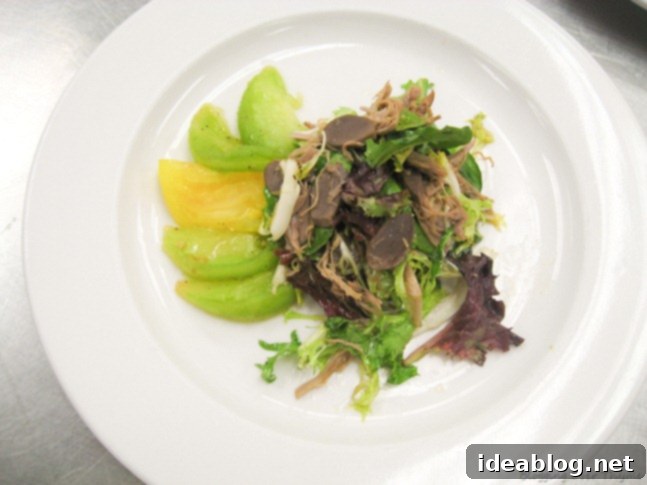
Our exquisite first course was a vibrant salad featuring savory duck and gizzard confit, complemented by beautifully prepared heirloom tomatoes. The preparation of these tomatoes involved a precise blanching and peeling technique, a meticulous task that, while essential for achieving a refined presentation and texture, I admit is quickly becoming the bane of my culinary existence due to its tedious nature. While duck confit is a familiar luxury from Phase I of our curriculum, the gizzard confit was an entirely new and intriguing experience for me, offering a unique exploration into offal cookery.
Gizzards are fascinating organs; essentially, they serve as a ‘second stomach’ in birds like ducks, compensating for their lack of teeth by helping them process and grind down food, including tougher elements like small rocks and seeds. Being composed entirely of dense muscle, gizzards require a prolonged cooking time at a very low temperature to break down their tough fibers and achieve optimal tenderness – a perfect application for the confit method, where they are slow-cooked in their own fat. Prior to this, I had no idea what to expect in terms of flavor or texture. To my surprise, the gizzard confit tasted much like any other rich, dark meat, albeit with a distinctly firm yet tender texture. While it hasn’t quite ascended to the top of my personal favorites list, it was certainly not unpleasant and offered a valuable, unique culinary adventure in preparing less common cuts.
Before service, we meticulously shredded the succulent duck confit and the tender gizzards, then gently sautéed them in a hot pan until warmed through and slightly crisped. To create a complementary warm vinaigrette, we deglazed the pan with a touch of premium olive oil and a splash of fragrant sherry vinegar, stirring to emulsify the pan drippings with the liquids. This warm, rich dressing was then poured directly over a bed of crisp frisée greens, forming the base of our elegant and flavorful salad, showcasing a delightful blend of textures and sophisticated tastes that married tradition with a touch of novelty.
To conclude our magnificent meal, we crafted delightful blueberry tartlets for dessert! These have quickly become one of my favorite sweet creations from our classes, and I can only imagine how truly exquisite they would be when fresh, plump blueberries are at the peak of their season during the summer months, bursting with natural sweetness. The process began by forming individual tartlet shells from delicate pâte sucrée, a sweet, crumbly dough that provides a perfect foundation for pastries. The bottom of each shell was then spread with an extremely thin, even layer of frangipane, an aromatic almond-based filling that bakes to a moist, cake-like consistency.
After the initial bake to set the crust and frangipane, we generously filled the tartlets with raw, fresh blueberries. A rich and flavorful topping was then prepared by whipping together egg yolks, sugar, and a luxurious splash of Kirschwasser, a clear fruit brandy that beautifully complements the blueberries and adds depth. This mixture was carefully spooned over the berries before the tartlets returned to the oven for a second baking cycle, allowing the blueberries to burst with flavor, and the topping to set into a golden, custardy finish. This multi-stage baking ensures a perfectly balanced texture and an explosion of vibrant fruit essence in every bite.
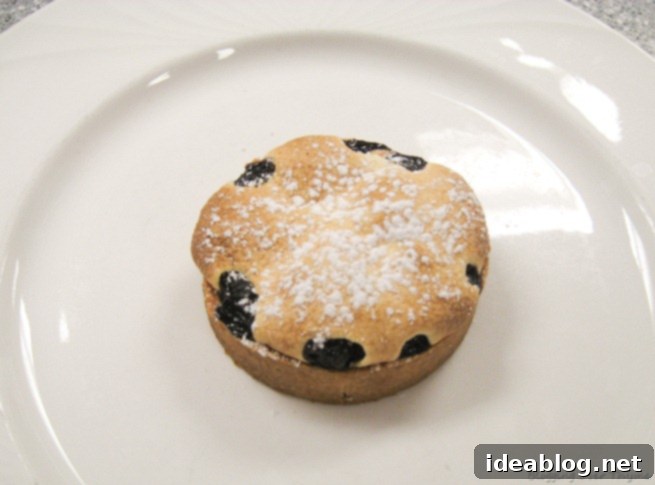
The resulting tartlets were truly delicious—light, yet intensely flavorful with the sweet-tart essence of blueberries. They offered a perfect balance of richness and freshness, making for an ideal dessert that wasn’t overly heavy. Hmm… I can still taste them!
Our afternoon transitioned from savory to sweet with an engaging two-hour lecture delivered by Chef Sam, the esteemed Phase II pastry chef, on the intricate art of tempering chocolate. This fundamental technique is crucial for achieving chocolate with a beautiful sheen, a satisfying snap when broken, and resistance to “blooming,” which is the formation of grayish streaks due to improper crystallization. While our primary application for tempered chocolate in the general culinary program will be for elegant plate decorations and garnishes, it’s worth noting that dedicated pastry students delve into the subject of chocolate for approximately two intensive weeks. Consequently, our session was an abbreviated yet incredibly comprehensive overview, perfectly tailored to equip us with the essential knowledge and understanding of this delicate process.
The scientific principles underpinning chocolate tempering are absolutely captivating, making it a topic I’ve long yearned to explore in greater depth. It involves carefully controlling the temperature of chocolate through specific heating and cooling curves to ensure the cocoa butter crystals solidify into a stable polymorphic form (Type V crystals), which is vital for its aesthetic and textural qualities. This fascinating and precise process is slated to come into practical play for us next week, and I eagerly anticipate putting theory into practice – details to come in a future post! The sheer complexity and precision required for perfect tempering, along with the visually stunning and texturally superior results, make it a truly rewarding skill to master in the culinary arts. In fact, the depth of this lecture truly warrants its own dedicated blog post to fully unpack all the nuances of chocolate science. For now, here’s a tantalizing sneak peek at the beautiful results we were shown how to achieve!
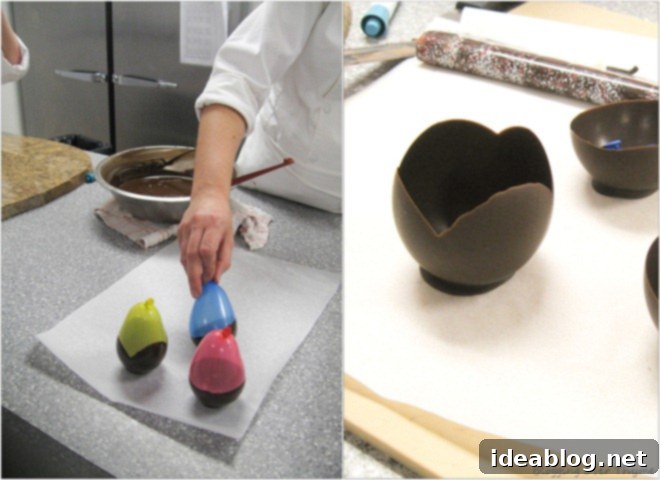
Surviving and thriving through this intensive first week at culinary school has been an incredibly rewarding experience! Each day has been a whirlwind of new knowledge, challenging techniques, and hands-on practice, pushing our abilities and expanding our understanding of the culinary world. While this journey has only just begun, the foundational skills and confidence gained are immense. I am thrilled to embark on the next phase of this exciting adventure in professional cooking.
I hope to return soon, possibly even this weekend, with a brand new recipe post to share some of the delicious creations from my culinary explorations. Thank you, as always, for joining me on this flavorful journey and for your continued readership!
